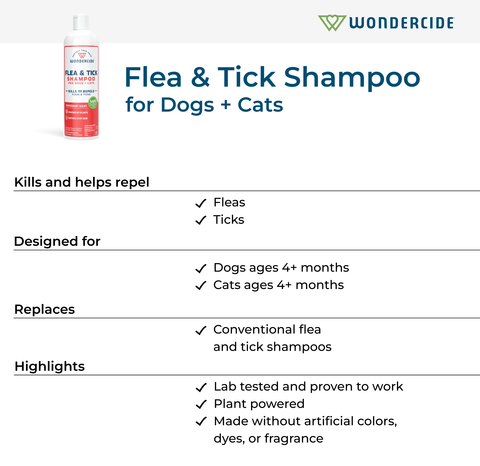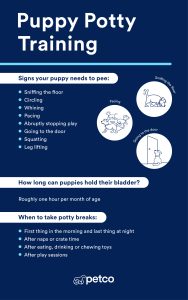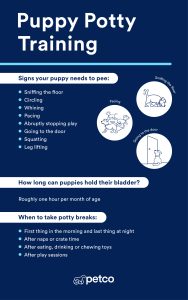If you’ve ever seen your dog scratching nonstop, you know how frustrating fleas can be—for both of you. You might be wondering, “How often should I use flea shampoo on my dog to keep those pesky bugs away without harming their skin?” Getting this right is key to keeping your furry friend comfortable and healthy.
You’ll discover the best routine for using flea shampoo, what signs to watch for, and tips to make the process easier for your dog. Keep reading to protect your pet and bring peace back to your home.
Signs Of Flea Infestation
Noticing fleas on your dog early can save you a lot of trouble. Flea infestations often start small but quickly grow if left unchecked. Recognizing the signs helps you decide when to use flea shampoo and protect your furry friend effectively.
Common Symptoms In Dogs
Look closely for constant scratching or biting, especially around the neck, tail, and belly. Fleas cause intense irritation, so your dog may seem restless or anxious. You might also spot small black specks, which are flea dirt, in their fur.
Sometimes, red bumps or rashes appear on your dog’s skin due to flea bites. Hair loss in patches is another clear sign, often where fleas tend to gather. Have you checked your dog’s coat recently for these signs?
Impact On Dog’s Health
Fleas don’t just cause discomfort; they can lead to serious health problems. Allergic reactions to flea bites can trigger skin infections or dermatitis. If your dog swallows fleas while grooming, it can result in tapeworm infections.
In severe cases, heavy infestations cause anemia from blood loss, especially in puppies or small breeds. Regular monitoring and timely treatment with flea shampoo can prevent these risks. Are you prepared to act as soon as you see the first signs?
Types Of Flea Shampoos
Different flea shampoos target various flea life stages and offer relief for sensitive skin. Frequent use depends on the shampoo type and your dog’s flea problem severity. Always follow product instructions for safe and effective treatment.
Choosing the right flea shampoo for your dog is crucial in ensuring their comfort and health. Flea shampoos come in various types, each designed to tackle fleas in different ways. Understanding the differences can help you make an informed decision for your furry friend.Medicated Vs. Natural Options
Medicated flea shampoos often contain chemicals that kill fleas on contact. They are highly effective and can be a quick solution to a flea infestation. However, some dogs might have sensitive skin that reacts to these chemicals. Natural flea shampoos, on the other hand, use plant-based ingredients. They are gentler on the skin and are a great choice for regular use. If you’re concerned about harsh chemicals, natural options might be worth considering.Choosing The Right Formula
When selecting a flea shampoo, consider your dog’s specific needs. Is your dog prone to allergies or sensitive skin? Opt for a hypoallergenic formula that minimizes irritation. If your dog spends a lot of time outdoors, a shampoo with a long-lasting effect might be necessary. Some shampoos also offer additional benefits like moisturizing the coat or repelling ticks. Have you ever wondered if the scent matters? Dogs have a keen sense of smell, so a pleasantly scented shampoo might make bath time more enjoyable for both of you.Recommended Usage Frequency
Knowing how often to use flea shampoo on your dog is essential for effective flea control without harming their skin or coat. The right frequency depends on several factors like your dog’s age, breed, and the severity of the flea problem. Overusing flea shampoo can dry out your dog’s skin, while underusing it might not eliminate the fleas completely.
Based On Dog’s Age And Breed
Puppies and senior dogs have more sensitive skin. Flea shampoos designed for adults may be too harsh for them. Usually, puppies under 12 weeks should avoid flea shampoos unless recommended by a vet.
Different breeds also react differently. Dogs with thick or double coats might need more frequent treatments because fleas can hide deeper in their fur. Short-haired breeds may require less frequent shampooing but still need regular checks.
- Puppies:Use flea shampoo no more than once every 2-3 weeks and only with vet approval.
- Adult dogs:Typically safe to use once a week or as directed on the product label.
- Long-haired breeds:May benefit from weekly shampooing during peak flea season.
Considering Severity Of Infestation
The intensity of the flea problem greatly affects how often you should bathe your dog. A mild infestation might only need a single treatment combined with preventive measures. However, a severe infestation may require multiple washes over a short period.
Here’s a practical approach:
- For light flea presence, shampoo once and follow up with flea prevention products.
- For moderate infestations, shampoo every 5-7 days until fleas are controlled.
- For heavy infestations, bathing every 2-3 days might be necessary but only for a short time to avoid skin irritation.
Have you noticed how some dogs react differently to the same flea treatment? Paying attention to your dog’s behavior and skin condition after each bath can guide you in adjusting the frequency.

Credit: bugalugspetcare.com
Potential Risks Of Overuse
Using flea shampoo too often can harm your dog’s health. It may seem like a quick fix, but overuse brings risks. Knowing these dangers helps protect your pet. Careful use keeps your dog safe and comfortable.
Skin Irritation And Allergies
Flea shampoos contain strong chemicals. Too much exposure can irritate your dog’s skin. Signs include redness, itching, and dryness. Allergic reactions may cause swelling or rash. Sensitive dogs feel discomfort and stress. Overuse damages the natural oils in fur. This leads to flaky and itchy skin. Avoid frequent washing to keep skin healthy.
Resistance To Treatment
Parasites can adapt to chemicals over time. Using flea shampoo too often may cause fleas to resist it. Resistant fleas survive and multiply faster. This makes treatment less effective. It can lead to stronger infestations. Rotating products or using other methods helps control fleas better. Avoid relying on shampoo alone for flea control.
Complementary Flea Control Methods
Using flea shampoo alone might not fully protect your dog from fleas. Complementary flea control methods help keep fleas away and improve your dog’s comfort. These methods work well together with flea shampoo to fight fleas more effectively.
Regular Grooming Practices
Brushing your dog regularly removes fleas and their eggs from the fur. Use a fine-toothed flea comb to catch tiny fleas and dirt. Grooming also helps spot fleas early before they multiply. Check areas like behind ears, under the belly, and near the tail. Bathing with flea shampoo can be part of grooming, but brushing daily keeps fleas under control.
Environmental Treatments
Fleas live in your home, not just on your dog. Cleaning your dog’s bedding often removes flea eggs and larvae. Vacuum carpets, rugs, and furniture to catch fleas hiding there. Wash blankets and soft toys in hot water regularly. Consider using safe sprays or powders designed to kill fleas in your home. Treating the environment stops fleas from coming back after shampooing your dog.

Credit: bugalugspetcare.com
Tips For Effective Flea Shampooing
Using flea shampoo correctly makes a big difference in how well it works on your dog. It’s not just about lathering up and rinsing off. You need to be thorough and gentle to really tackle those pesky fleas without stressing your furry friend.
Proper Application Techniques
Start by brushing your dog’s coat to remove tangles and loose hair. This helps the shampoo reach the skin where fleas hide.
Wet your dog’s fur thoroughly with warm water. Avoid using water that’s too hot or cold—it should feel comfortable to the touch.
Apply the flea shampoo evenly, working from the neck down to the tail. Make sure to cover the belly, legs, and under the collar area where fleas often gather.
Massage the shampoo deeply into the fur and skin for at least 5 minutes. This allows the active ingredients to kill fleas effectively.
Carefully avoid your dog’s eyes, ears, and mouth during application. These areas are sensitive and can get irritated easily.
Post-shampoo Care
Rinse your dog thoroughly to remove every bit of shampoo. Leftover residue can cause itching or dryness.
Dry your dog gently with a towel—avoid vigorous rubbing that can irritate the skin. If your dog tolerates it, use a blow dryer on a low, cool setting.
Check your dog’s coat for any remaining fleas or eggs after shampooing. Use a fine-toothed flea comb to catch stragglers.
Consider giving your dog a treat or some extra cuddles post-shampoo. Positive reinforcement helps your dog associate flea baths with a good experience.
Have you noticed how your dog’s behavior changes after a proper flea shampoo session? Paying attention to these details can make flea control easier and less stressful for both of you.
When To Consult A Veterinarian
Knowing when to consult a veterinarian is key for your dog’s health. Flea shampoos help control fleas, but they are not always enough. Some flea problems need professional advice and treatment. Recognizing signs that require a vet visit can protect your dog from harm. Early action keeps your dog comfortable and safe.
Persistent Flea Problems
Fleas that keep coming back may mean a bigger problem. If flea shampoo does not clear fleas after several uses, seek help. Constant scratching, redness, or hair loss shows fleas are still a problem. Fleas can cause skin infections or allergies. A vet can check for these issues and treat them properly.
Alternative Treatment Options
Sometimes flea shampoo alone does not solve the issue. Vets offer other treatments like oral medicines and spot-on solutions. These can be more effective and longer lasting. They also help protect your dog from flea-borne diseases. Your vet can recommend the best option based on your dog’s health and age.

Credit: alzoo-vet.com
Frequently Asked Questions
How Often Should I Bathe My Dog With Flea Shampoo?
Use flea shampoo once every 7 to 14 days during an active infestation. Avoid overuse to prevent skin irritation. Follow product instructions carefully for best results.
Can Flea Shampoo Be Used Weekly On Dogs?
Yes, weekly use is safe if the product label allows. Overuse may cause dryness or irritation. Always monitor your dog’s skin condition.
When Should I Stop Using Flea Shampoo On My Dog?
Stop when fleas are completely eliminated and no eggs are visible. Consult your vet if fleas persist after several treatments.
Is Flea Shampoo Safe For Puppies And Kittens?
Only use flea shampoo specifically formulated for puppies and kittens. Check the age recommendation on the label to ensure safety.
Conclusion
Using flea shampoo on your dog depends on their needs and environment. Regular checks help spot fleas early. Avoid overusing shampoo to protect your dog’s skin. Follow product instructions for safe use every few weeks. Combine shampoo with other flea control methods for best results.
Keep your dog clean and comfortable. Healthy pets mean happy owners. Stay consistent and attentive to keep fleas away.

Emily Barker is the founder of ChillDogLife.com, a space dedicated to helping pup parents discover the best dog products, lifestyle tips, and cozy ideas for happier homes.
A lifelong dog lover, Emily combines her passion for pets with a knack for research to share trusted recommendations on everything from toys and furniture to health and everyday care.
Her goal is simple: to make life easier, stylish, and more joyful for dogs and the people who love them.







